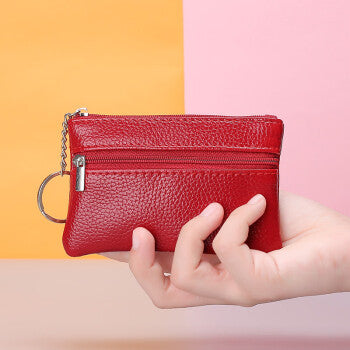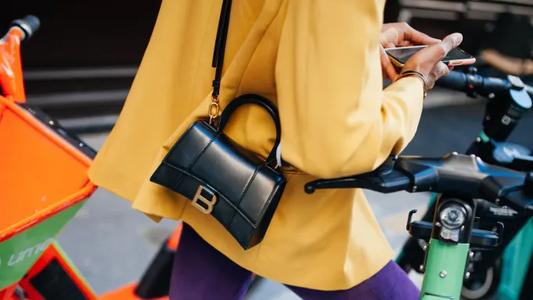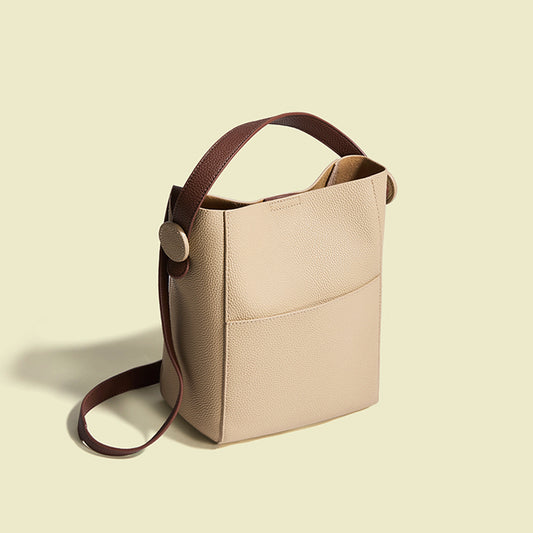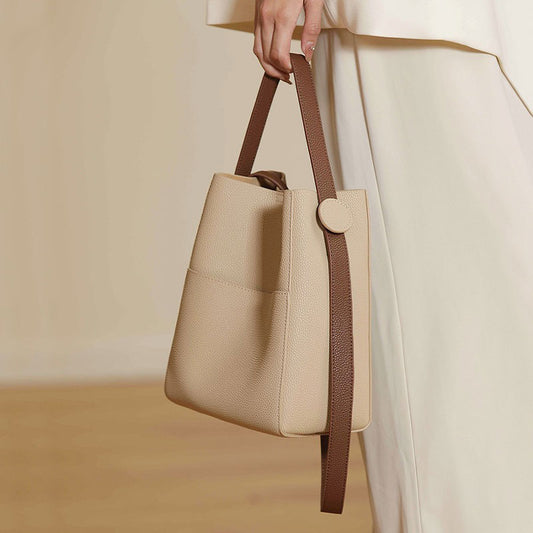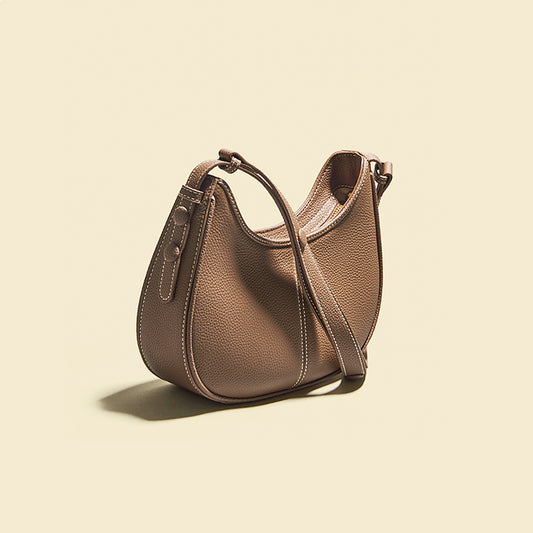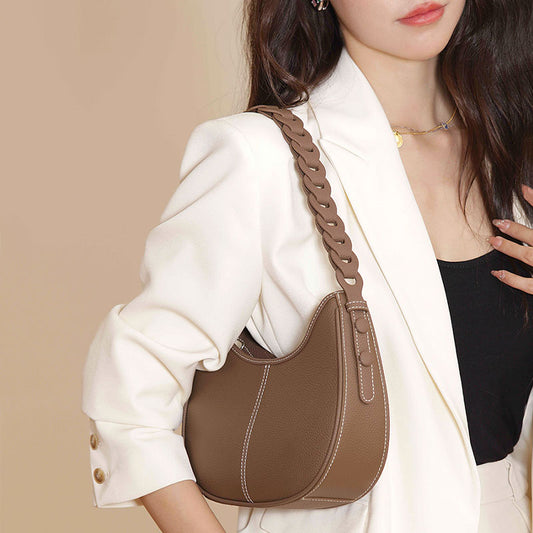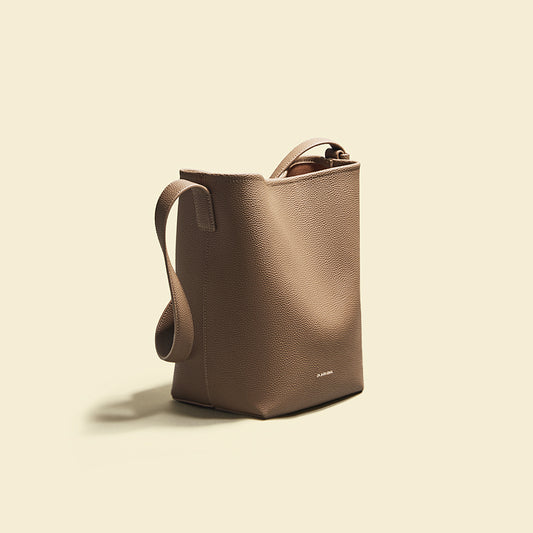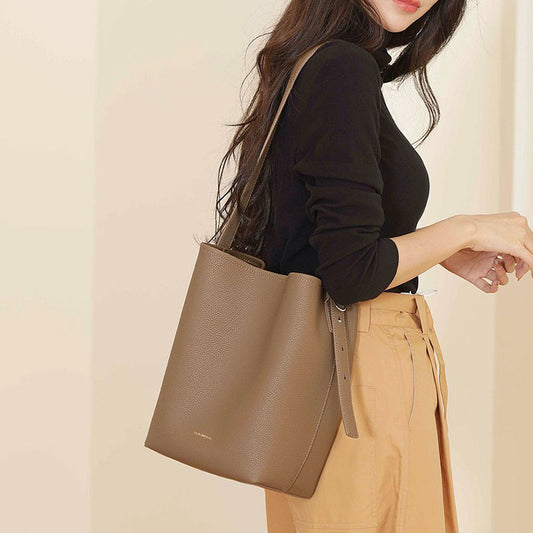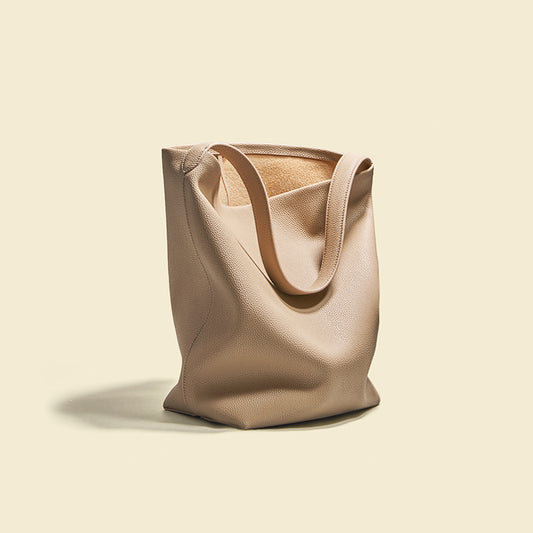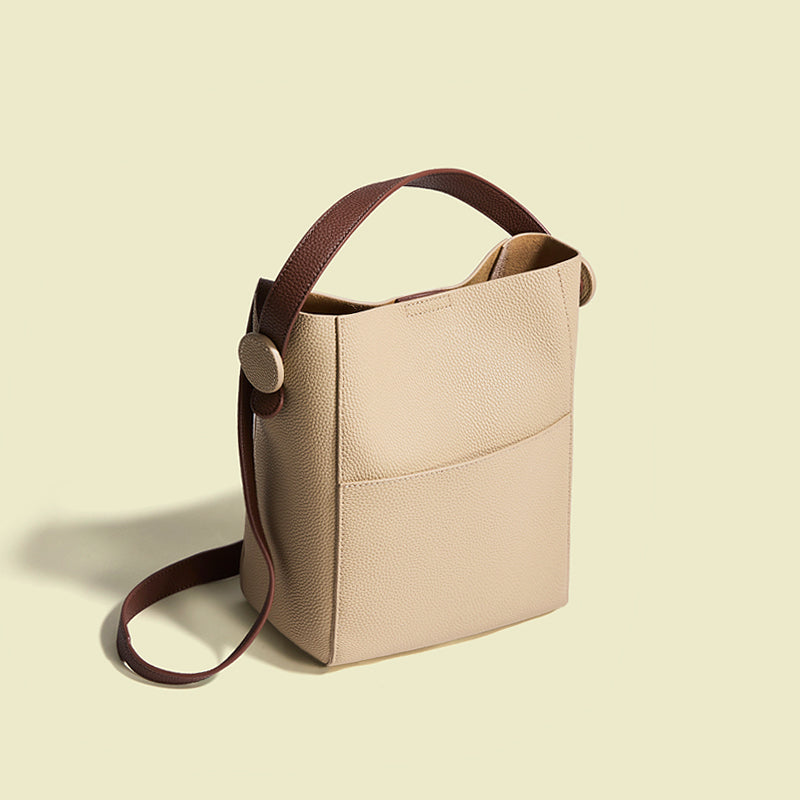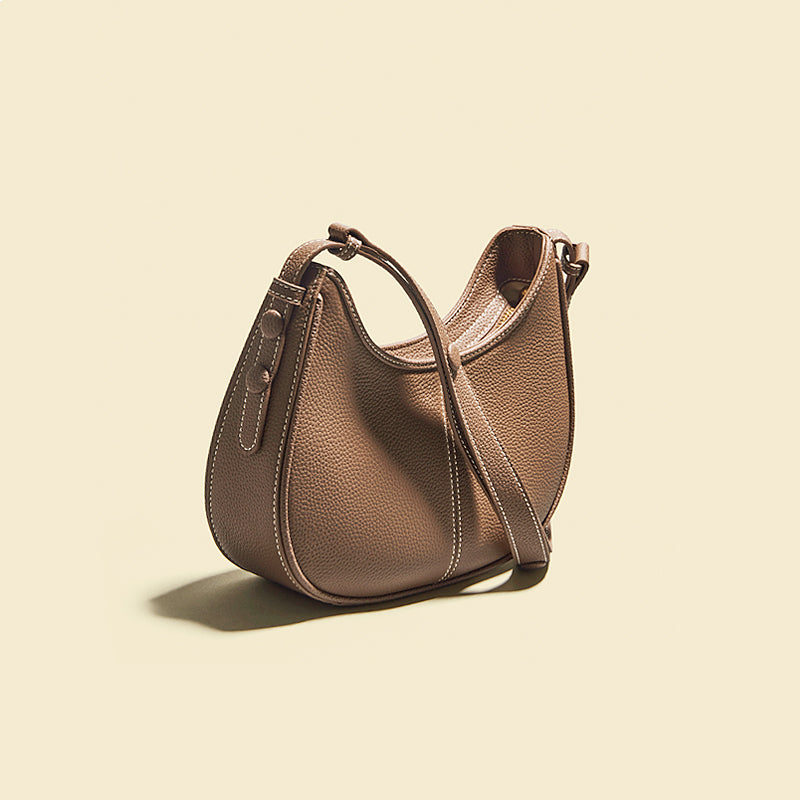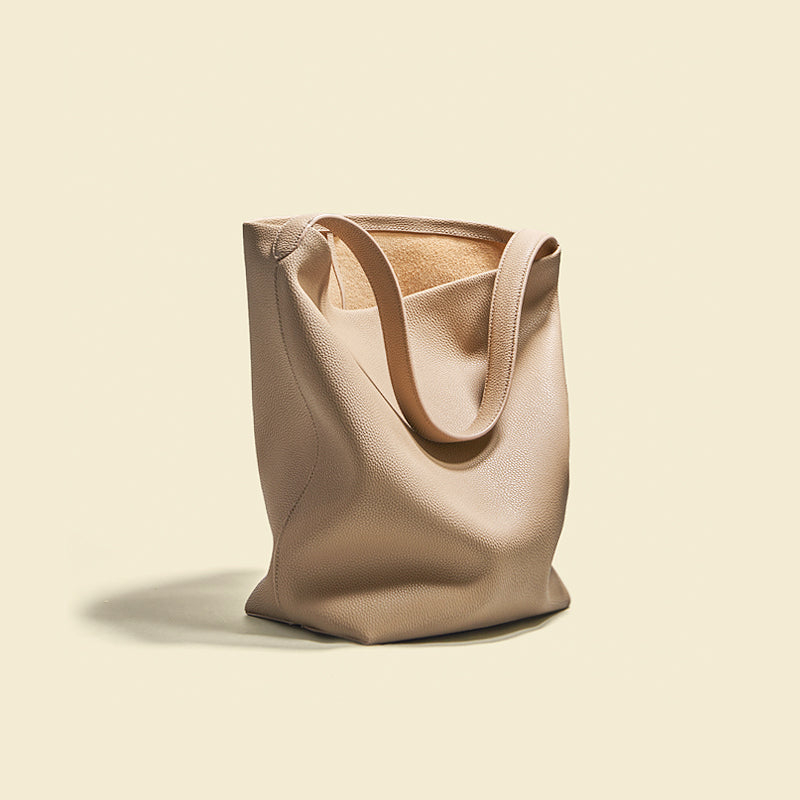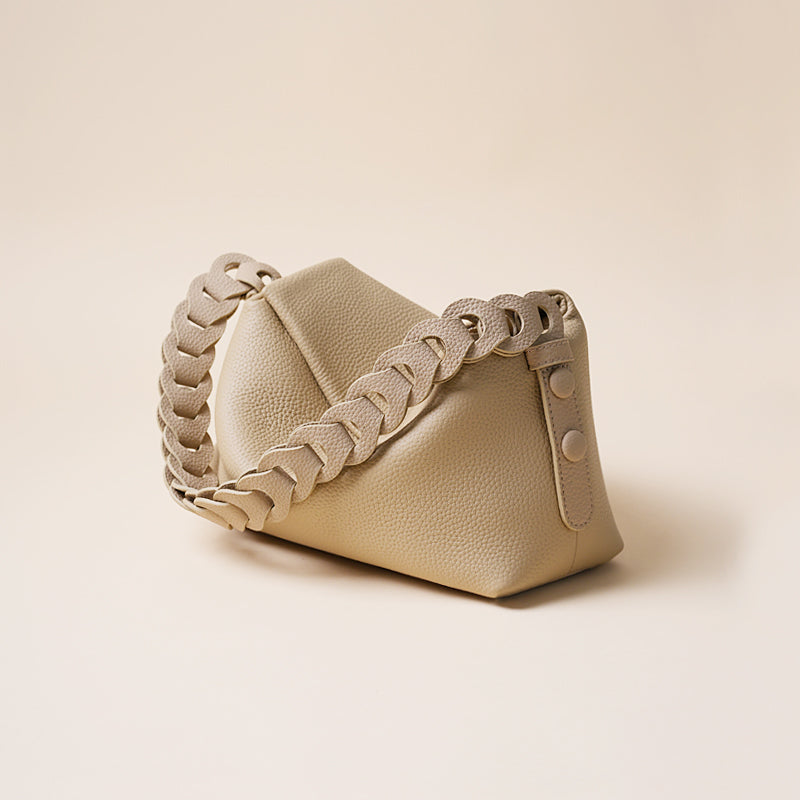Mold spores (also known as mold dust) are microscopic. Mold grows best in damp, dark areas which makes leather bags a prime target for growth if proper care is not taken.
These bags are expensive and sometimes it's not easy to just throw away a bag that has mold on it. There are ways of removing mold from leather bags and it is possible to save your favorite leather bag without throwing it away and repurchasing it all over again.
In this post, I'm going to take you through several methods of removing mold from leather bags, so that you don't make the same mistakes I did.
What is mold?
Mold is a type of fungus that grows in a wide range of environments and on many kinds of organic matter, including plants and animals.
Molds produce microscopic spores that can be dispersed by air currents, water droplets, insects, or other animals.
Once the mold spores land in an environment suitable for growth, they begin to produce thread-like hyphae that spread out in all directions.
These hyphae are too small to see without magnification. As they grow, they form a dense network known as mycelium.
Why does mold tend to grow on leather bags?
Mold tends to grow on leather bags because the material is porous, and it can feed off of the protein in animal skin, mold is a type of fungus that survives by breaking down organic matter and using it as food.
Leather is a natural material, so it has natural pores which allow mold to grow in them. These pores also make the leather soft and flexible, which is what makes it so popular.
It's very important to treat your leather bags with care, especially if they contain any sort of moisture (like wet clothes).
You should always make sure that your bag is completely dry before storing it away. If you don't, then mold may develop in the bag and ruin its contents.
Dry out the leather bag from the mold completely.
The leather bag is made from natural cowhide, so it is vulnerable to mold. You need to dry out the leather bag from the mold completely. The easiest way to do so is by using a hair dryer.
Set it on low heat, and blow hot air in the affected area of your bag for about 15 minutes or until you see that it has dried up completely.
If you don't have a hair dryer at hand, you can also use an electric fan or place the bag under sunlight for a few hours. It will take longer than using a hair dryer, but it will still get rid of any moisture that might be trapped inside your leather product.
Wipe down your leather bag with vinegar to remove mold spores.
Leather bags can be a great investment, but they can also attract mold spores. To keep your leather bag looking its best, you'll want to wipe it down with vinegar once in a while.
The reason for this is that vinegar is an acidic substance, so it will kill the mold spores and remove them from the surface of your bag. Vinegar is also an effective cleaner, so you don't have to worry about damaging your bag with this treatment.
All you need to do is get a clean cloth and some vinegar (white distilled vinegar works best) and then wipe down the area of your bag that has mold spores on it. You'll want to do this as soon as possible because if you leave the spores on there for too long, they'll start growing into larger colonies that are harder to remove.
If you notice that there's mold on your bag but don't have any vinegar handy, don't worry — there are other ways of dealing with it!
You can try using baking soda or salt instead (although these don't work quite as well). If all else fails, try using lemon juice instead; although it isn't as effective as vinegar or baking soda/salt, it will still kill off most of the mold spores left over after cleaning
Use rubbing alcohol. Rubbing alcohol is another great way to eliminate mold in leather goods.
Use rubbing alcohol. Rubbing alcohol is another great way to eliminate mold in leather goods. Simply spray a bit on the area and let it sit for about 15 minutes before wiping it off with a clean cloth.
Once the area is dry, give it another quick spray and wipe again for good measure. Afterward, wipe off any excess moisture with a clean cloth or paper towel.
Use vinegar and water solution. Vinegar has natural antifungal properties, which make it perfect for killing mold in leather goods.
Mix one part vinegar with three parts water and apply the solution with a sponge or rag until all traces of the mold have disappeared from your item.
If you do not have these items on hand, however, you can also use regular soap and water instead. This method works well because it provides both an antibacterial agent and a cleaning agent all at once!
Use a gentle, dry towel to wipe away any excess moisture from your leather bag.
Use a delicate towel bathed in warm water and mild soap to clean leather bags. The leather might be damaged by hot water, so be careful. To get rid of any extra moisture, wipe your bag with a soft, dry towel.
Try using saddle soap or glycerin soap if your bag has stains or markings that won't come off with routine washing. Saddle soap is made for cleaning leather items because it has natural oils that condition the leather and help protect it from cracking and drying out over time.
Glycerin soap is another option for cleaning leather bags because it contains glycerin, which helps restore moisture to dry leather surfaces.
If you use saddle soap on your bag, follow the manufacturer's instructions on how much product to use and how much time it needs to be left on the surface before wiping it off with a clean cloth or towel.
If you're using glycerin soap instead, simply apply a small amount of it directly onto your bag's stain or mark and let it sit for two minutes before rubbing it off with a clean cloth or towel
Air out the bag frequently. This is a good option for leather bags with a little mold but not a ton of it.
You can air out your leather bags, but before you do that, check for mold. If the leather bag has a little mold, it’s probably fine to air it out. You can usually tell if there’s mold because it will smell bad or look like green or black spots on your bag.
Get rid of the bag if you see any of these symptoms. Mold is extremely harmful, and breathing in its spores can result in major health issues.
If there’s no mold to worry about, then proceed with airing out your leather bag. It’s a good option for leather bags with a little mold but not a ton of it.
Find an area with good air circulation — away from heat sources like fireplaces or vents — and place your bag on an elevated surface so air can flow underneath it. Leave the bag alone overnight so that moisture can evaporate and dry out naturally.
Air out the bag frequently. This is a good option for leather bags with a little mold but not a ton of it. If your bag is mostly intact, take it outside in the sun and let it sit in the fresh air for an hour or so each day.
You'll want to put something under it on the ground to keep water from getting into the seams of the bottom of your bag. This will allow moisture to evaporate out of the leather instead of sitting inside and growing mold.
Spray with tea tree oil. This can be done for small amounts of mold or to complement one of the other options above.
Spraying tea tree oil on moldy surfaces is a good option for small amounts of mold. It helps to kill it, but it's not a solution for large areas.
The essential oil with antibacterial and antifungal effects is tea tree oil. Athletes' foot and fungal nail infections are among the skin ailments that it is effective in treating. The majority of drugstores, health food stores, and online retailers all carry tea tree oil.
To use tea tree oil to kill mold, mix equal parts water and tea tree oil in a spray bottle. Spray the mixture on surfaces that have visible signs of mold growth or on items you suspect may be contaminated by mold spores, such as clothing or blankets. Allow the mixture to sit for several minutes before wiping it away with paper towels or rags.
Conclusion:
Through these tips, you should be able to learn a little bit more about leather bags and how to keep them clean and mold-free. The last thing anyone wants is to have their personal belongings ruined by mold.
You don't have to throw away your favorite leather bag because of mold, now you get several ways to remove mold. Go ahead and try them out, it's not hard and easy for people who know how to do it.
Frequently Asked Questions
Does mold come out of leather?
Leather is a durable material, but it can be damaged by mold spores. Mold grows on leather when there is moisture and warmth, so it's important to prevent the growth of mold on leather furniture, bags, and other items made from leather.
Mold usually appears as a black or greenish discoloration on the surface of your leather. If the mold has penetrated deep into the leather, you may see small holes in its surface.
Mold grows best in warm, humid climates where there is plenty of moisture available. This means that it grows faster during the summer months than at any other time of year. The first step in preventing mold from growing on your leather furniture is to reduce humidity levels in your home during hot weather months.
If you have a problem with mold growing on your leather furniture, use a dehumidifier in your home to reduce humidity levels during warm weather months. You can also use an air conditioning unit if possible or open windows whenever possible to allow cooler air into your home during those times when temperatures get too hot and humidity levels are high.
Will vinegar kill mold on leather?
The answer to this question is "yes," vinegar will kill mold on leather. Vinegar can be used as a cleaning solution for many different items, such as wood furniture and concrete floors.
Vinegar is an acidic liquid made from a variety of fruits or grains and has been used for centuries as a cleaning product. It is commonly used in baking, pickling, and other recipes that require an acidic liquid to activate or enhance the flavor of foods.
Vinegar contains acetic acid, which is why it is effective at killing mold on leather surfaces. The acid in vinegar breaks down the cell walls of mold spores, causing them to die off before they can spread throughout the area, they're in.
Vinegar also helps remove moisture from leather products so they are less susceptible to future mold growth during humid weather conditions.
Can mildewed leather Be Saved?
Mildewed leather is a problem that can occur in homes with humid climates or in those that are poorly ventilated. Mildewed leather is not just unsightly, it can also damage the leather's fibers and cause it to crack and peel. The best way to avoid mildewed leather is by keeping your home well-ventilated and dry.
If your leather has been damaged by mildew, there are steps you can take to restore it. However, if the damage has gone too far, you may have to replace the affected area.
Clean up all of the moisture from the area first by wiping it down with a damp cloth or towel. If there's any visible mold, use an anti-dust mite spray or other cleaning product safe for use on leather items. Let the area dry completely before proceeding further with restoration efforts.
Apply at least two coats of shoe polish or conditioner on top of each other to restore color and texture lost through drying out of leather fibers due to excess moisture exposure over time. Allow each coat to dry completely before applying another coat until desired results are achieved (usually two coats will do).
How do you store leather bags to avoid mold and humidity?
Leather bags are a great investment and can last you a long time if properly cared for. However, if you don't take care of your leather bag, it will deteriorate over time and become unusable.
Here are some tips for how to store leather bags to avoid mold and humidity:
1. Keep them in a cool, dry place.
2. Use a protective cover or case when not in use.
3. Keep them away from heat sources such as radiators, air conditioning units, and heat lamps.
4. Do not expose them to direct sunlight or strong artificial light sources like fluorescent bulbs or halogen bulbs that can cause fading and crack in the leather material over time.

